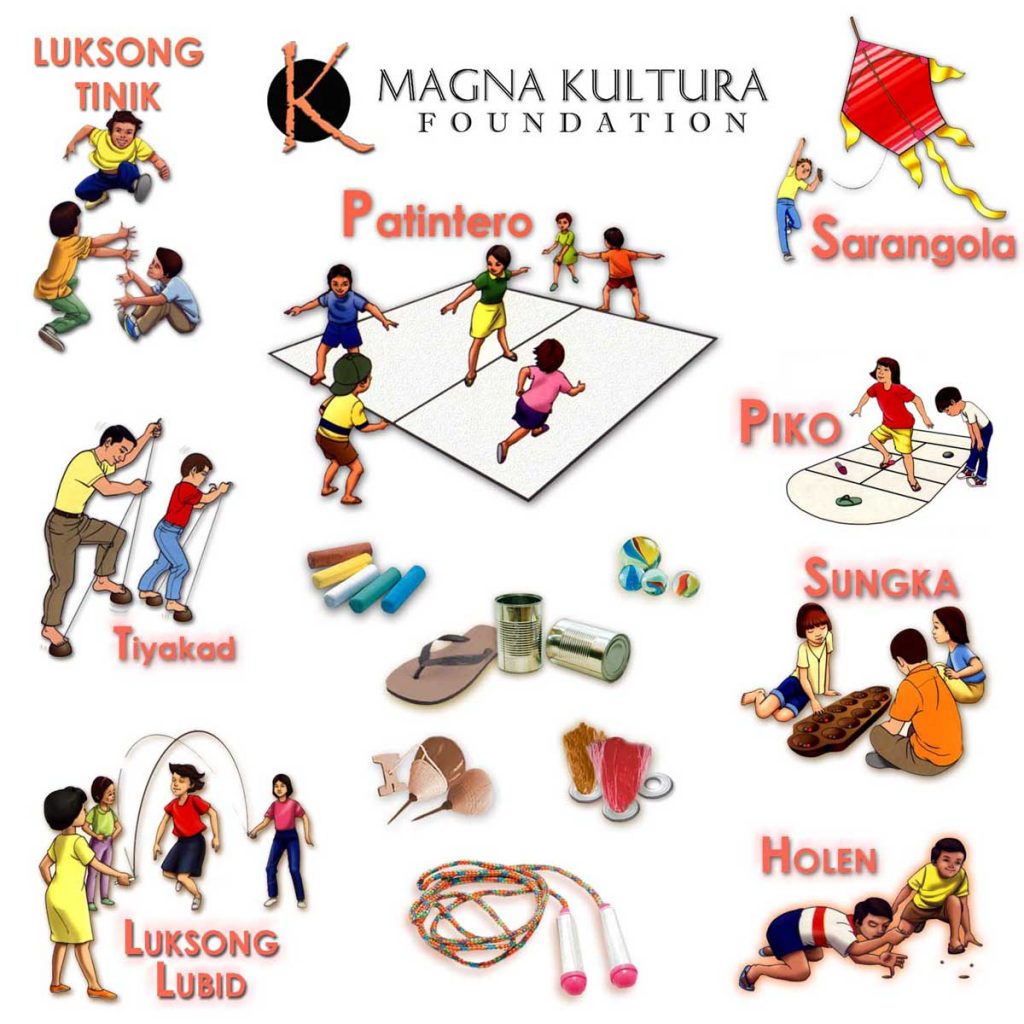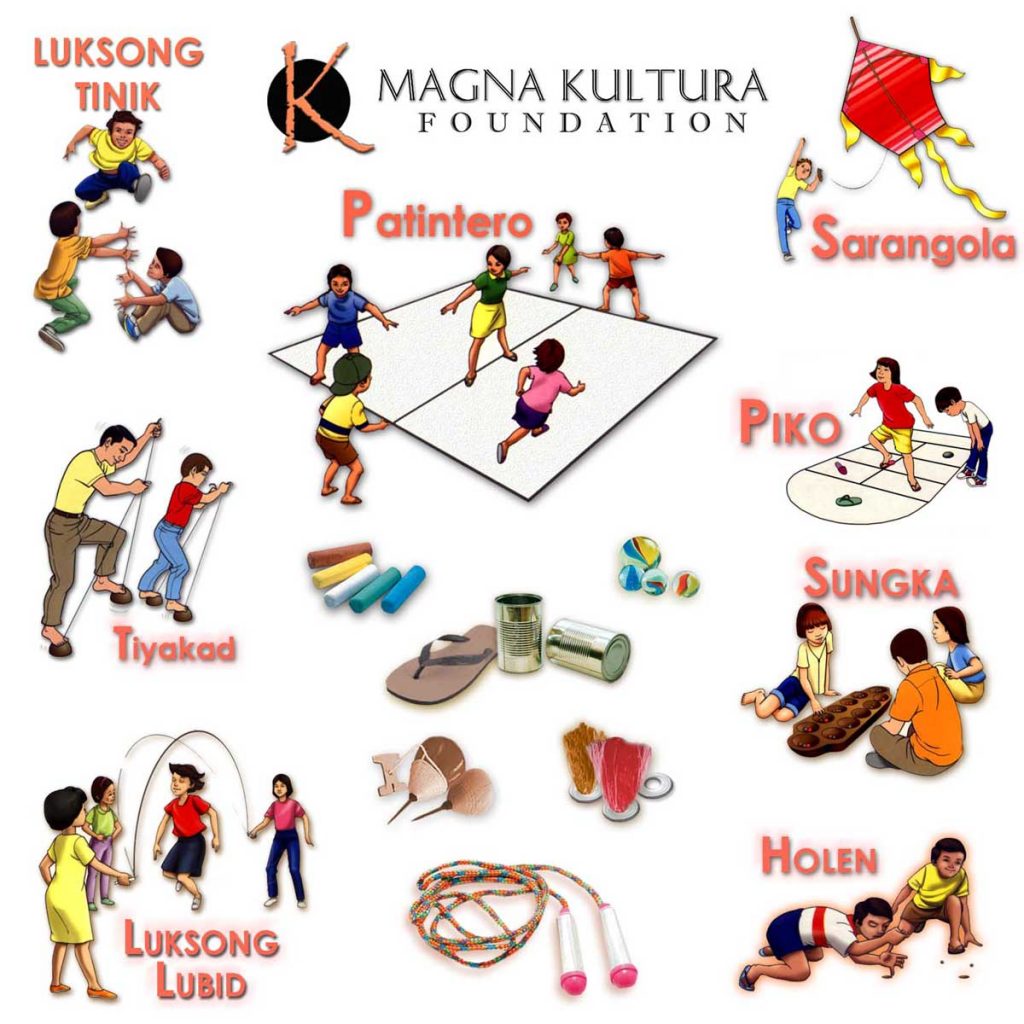
We never run short of exciting and traditional Filipino games.
Do you remember the feeling of rush changing into pambahay clothes after school while your friends are calling you outside? How about feeling sad when you get called one-by-one to go home because it was getting dark?
Back then, you can leave a group of children alone, and they could easily pass the time by playing outdoor games. Never mind going home with scraped knees, bruises, and dirt on our hands and legs—that adds to the fun!
Here are the top ten traditional Filipino games that we all love!
1. Patintero
Patintero requires a combination of agility and diskarte from both the two teams. Each team takes turns to be guards and runners. The objective is for the runners to move forward and cross the lines without getting tagged by the guards.
Since it is a highly physical game, it often results in pikunan from excessive tackling from the opposing teams. Nonetheless, the thrill of planning how to cross the line without getting touched by the guards is the best!
2. Tumbang Preso
If there is a representing game in Larong Pinoy, it would be Tumbang Preso. As children, we’ve all rummaged the house searching for the thickest and most durable slipper for a sure hit. And no doubt, Rambo slippers would be the winner of this search any day.
The game mechanics are simple. You only need a tin can (which most probably is canned corned beef you ate last night) and a slipper. The “it” guards the can while other players take turns in hitting the can. The game of tag starts once the can gets knocked down.
3. Piko
Piko is the Filipino version of hopscotch. You usually use chalk, charcoal, or stone to draw the boxes. These boxes have different levels in which you have to throw your pamato in. The pamato is usually stone, but you’ll see different variants, from keys, keychains, bottlecaps, even slippers, etc.
Expect that your playmates will distract you from your balance by shouting randomly or making funny faces at the side. We’re that competitive, and we know it.
4. Agawan Base
This is a popular game in elementary schools during recess time. The game of minds starts once you settle the teams and assign the base (which are usually trees).
The objective is to touch the base of the other team without getting caught by them. Once you get caught, you become a prisoner. It becomes sad when the bell rings, and none of your team members were able to rescue you.
5. Luksong Baka/Luksong Tinik
Filipino kids sure do like jumping and galloping around. And so we have the games Luksong Baka (“jump over a cow”) and Luksong Tinik (“jump over thorns”).
In Luksong Baka, the “cow” will crouch down as other players jump over him. The height gradually rises as the level goes up. In Luksong Tinik, the mechanics are similar, except two players stack their feet and hands to make a rising tower. When the player fails to leapfrog, he becomes the new “cow” or “tinik.”
6. Ten-Twenty
Oh, to become a mother and feel honor and the pressure of the “dead-mother-dead-all” rule during Ten-Twenty. This game is the source of pride for kids who have superior jumping (and cartwheel!) skills.
You can use either a stretched garter or pieces of rubber band tied together. Two players from the opposing team hold each side, while the team that has their turn jumps. It starts from the ankles then on the knees until it reaches the height of the head.
The rule varies depending on what you decide on. You can either end the count by stepping on the string (“tapak”) or outside. There is also the Tinikling version of Ten-Twenty similar to how the dance goes, and plain old Chinese Garter game. Usually, once it reaches the head, it turns into a play of Limbo Rock.
7. Langit-Lupa
Langit-Lupa is one of the popular traditional Filipino games. You would feel the adrenaline rush finding a Langit” to hop on while running away from the “it.” Basically, one player has to stay in Lupa (earth) while the other struggles to remain in Langit (heaven). Some variations of the game put a limit on how long players can stay in Langit. Whoever gets tagged while on Lupa becomes the new “it.”
8. Dampa
Dampa is a game of lastiko or rubber bands. You can play Dampa on any flat surface with the objective of moving the rubber band forward from the starting line. Usually, players go crazy, hitting their palms on the ground to produce compressed air.
We envy those who use effective hand movements and tactics that create stable air. It requires a lot of patience (and arm strength) to play without fighting over player warnings.
9. Ice water
Ice water is also called Ice Ice Water. It is a game of tag with a fun twist. It is a fun but really exhausting game, especially if you’re playing with a lot of people.
When the “it” tags the other players, they have to freeze and not make any movement. It’s fun to watch frozen players resist movement while the “it” tries to catch a change in their pose. Other players unfreeze by tapping them while shouting “water.” It ends when the “it” freezes all the players.
10. Sipa
Go to an elementary school during uwian, and you’ll see boys scattered while one holds a colorful thread in hand. This object is called “sipa,” which is usually made of a washer with plastic straws attached to it.
The sipa is thrown upwards for the player to toss using the foot, without letting it fall down the ground. The one with the highest number of kicks wins the game. You’ll see kids on the street in pambahay clothes but wearing a leather or rubber shoe in one foot.
BONUS: Teks
Who among us didn’t buy a stack of teks cards as kids? Plus, getting our favorite cartoon character on the card is an immense delight.
Players make a bet on which side of the card will show after flicking the cards in the air. The player with the card that faces the same way with the betting card wins gets to keep all the bets. Did you enjoy this nostalgic trip? Let’s keep these traditional Filipino games alive by making sure that the next generation knows about them!










